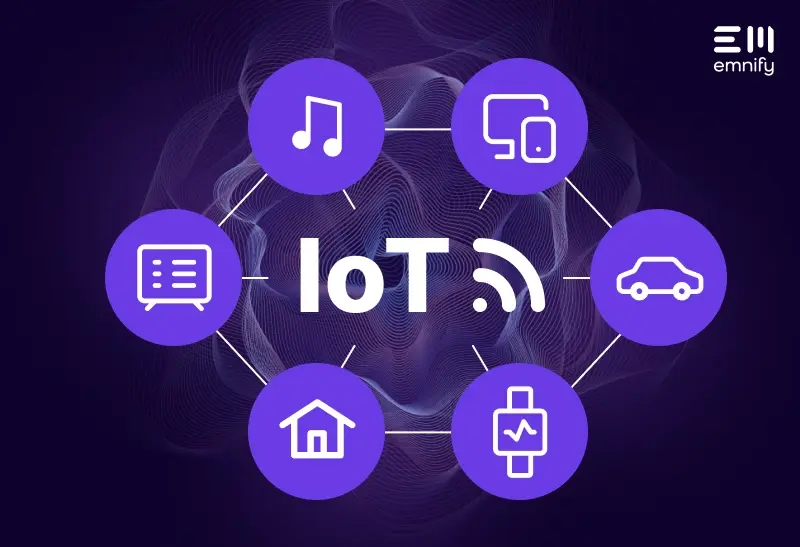

There’s no shortage of big promises in the eSIM space. Freedom-to-switch providers. Full lifecycle management. Total control. But take a closer look and you'll find something else buried beneath the marketing: failure.
There is a saying in German: die Straße ist gepflastert mit Leichen - the street is paved with dead bodies. It means many have tried, most have failed. In the world of the M2M eSIM (SGP.02), it’s an accurate description. The street is littered with overengineered systems, delayed deployments and “revolutionary” ideas that collapsed the moment they met reality.
At emnify, we chose a different path - focusing on the reality in front of us and solving for that. While others chase what eSIM might become in 18 to 24 months, we’ve made it work today, at scale, for real businesses.
The Overpromise of M2M eSIM
Much of the early excitement around the SGP.02 eSIM centered on remote provisioning of profiles. On paper, it made perfect sense: the ability to switch operators remotely, reduce logistics, and scale globally. In practice, it proved too complex, too expensive, and too closed-off to work for anyone outside of large automotives.
These systems were designed by and for industry giants with deep pockets and long timelines. The infrastructure costs alone put them out of reach for most businesses. And while these giants tried to engineer the perfect solution, the world moved on.
Consumer Devices, B2B Problems
As M2M eSIM (SGP.02) stalled, another story was unfolding. For years businesses had been using consumer devices like iPads, iPhones and Android tablets at scale in B2B operations. These devices are cost-effective, powerful and already eSIM-enabled. But when manufacturers began shipping eSIM-only models the well-oiled processes for physical SIM logistics and assembly became obsolete overnight, creating a new provisioning bottleneck.
One of our customers shared how they ordered 6,000 eSIMs from their then-provider and quite literally received 6,000 individual A4 letters each containing a single QR code. For large deployments what should be a straightforward rollout became a manual, error-prone and time-consuming process.
The Consumer eSIM (SGP.22) was never built with business fleets in mind. It was designed for individuals to scan a QR code and activate a plan. That works until you need to deploy hundreds or thousands of devices across teams, countries, and workflows - at which point a simple consumer process becomes a massive operational challenge.
This is the blind spot. Few are solving the reality of B2B deployments today, except us.
What We Solved and Why It Matters
We saw the gap and built around it. Instead of trying to reinvent Consumer eSIM, we integrated it into the business deployment flow - MDM systems, DNS filtering, automated provisioning. The eSIM profile delivery becomes part of the existing device rollout. No QR codes. No printouts. No broken workflows.
Discover Airlines shows what this looks like in practice. Their teams use iPads for their Electronic Flight Bags. With emnify integrated into their MDM, they deploy new devices with eSIMs already activated. No manual steps. No delays. Just control, scale and speed.
The Technology Everyone Said We Couldn’t Build
What makes this possible isn’t just the idea, it’s the infrastructure behind it. When we started emnify the telecom industry told us it couldn’t be done. Core networks were supposed to come from Ericsson or Nokia, not from a startup team of six. We ignored the so-called common wisdom and applied first principles to go fully cloud-native, building our own globally distributed core network from scratch.
Our edge is that we own every piece of the network and SIM management stack. This lets us prototype fast, ship fast and adapt faster without waiting on vendor roadmaps or working around third-party limitations. When we see a real problem, we solve it not in 18 months but today.
From Verticals to Value: Our Strategic Advantage
Another reason we move quickly is that we don’t build narrow, vertical solutions, we extract horizontal value. We look across industries like aviation, healthcare, logistics, and retail to identify common patterns, then solve the core job in a way that works everywhere.
Take eSIM logistics. Whether you’re equipping pilots, nurses, or field technicians, the requirement is the same: a simple, scalable, and controllable way to deploy and manage connectivity. That’s what we deliver.
Looking Ahead: SGP.32 and the Real Revolution
SGP.32, the next-gen standard, has generated significant buzz for its potential to address many of the shortcomings of past iterations. We believe in it. Unlike SGP.02, it is designed for broader adoption, with greater accessibility, flexibility and realism.
When it arrives, we’ll be ready. We see it as a growth lever. While some in the market fear the freedom-to-switch that SGP.32 enables, we embrace it. For every card we might lose to easier switching, we expect to gain four more because we deliver a superior product that businesses actually need.
Final Thought
It’s this ability to solve today’s challenges while building for tomorrow that sets emnify apart. Our approach hasn’t gone unnoticed. In 2025 alone, we’ve been recognized as eSIM Provider of the Year at the MVNOs World Awards and received Platinum honors for eSIM Management Platform Innovation from Juniper Research. These awards underscore what our customers already know: when it comes to delivering real innovation in eSIM, emnify leads the way.
We’re not here to chase hypes. We solve real problems - clearly, efficiently and without unnecessary friction. That’s what made us the first to deploy a globally distributed cloud-native core. That’s what helped us master SGP.22 logistics when others ignored them. And that’s what will drive the next wave. Others can keep paving the street with failed eSIM promises. We’ll keep building what’s next - on solid ground.
I’d love to hear your perspective: where have you seen eSIM live up to the hype and where has it fallen short? How do you see the future of eSIM unfolding in your industry? Drop your thoughts here, let’s cut through the noise and talk about what actually works.
Ready to stop chasing eSIM promises and start scaling real deployments?
Let’s talk about how emnify can help you eliminate complexity and take control today.

Frank Stoecker is CEO and co-founder of emnify. A successful serial entrepreneur and recognized telecoms expert for over 15 years, Frank anticipated early that the new wave of connected services demanded new concepts to simplify connectivity on a global scale. Prior to co-founding emnify, Frank held leadership positions at MACH and Syniverse.


